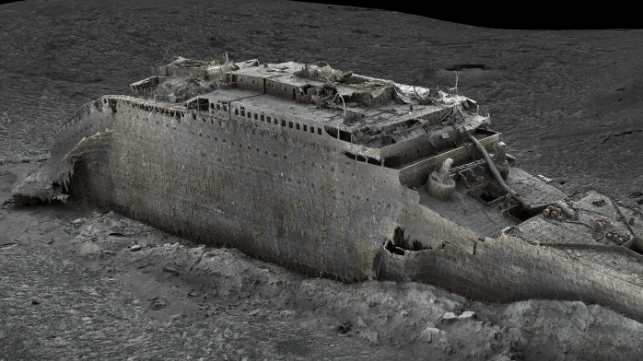Subsea Services Firm Creates "Extraordinary" Model of Titanic's Wreck

A team of explorers with deepwater ROV services company Magellan have completed the most detailed survey of the wreck of the Titanic ever conducted, producing a millimeter-resolution "digital twin" of the lost ship and her resting place.
The remarkably detailed 3D model reveals the wreck in its entirety, with water and murky darkness stripped away, allowing researchers (and the general public) to search for new clues to her loss. It is the first time that the ship can be viewed in its entirety in a single image - impossible before, given the physical limits of light transmission underwater. The scan also creates a precise baseline for the ship's condition, which will deteriorate over time in the marine environment.
Over the span of six weeks in the North Atlantic's foul weather, the Magellan team used an offshore vessel and two ROVs to scan the wreck site in "extraordinary detail. They collected over 700,000 images, and the team stitched this trove of data together into a detailed model, precise enough to show the serial number on the ship's propeller. The survey captured both the bow and stern sections, along with the debris field.
Spectacular new images and 3D video of the Titanic. @AtlanticProds #Magellan.
— Vincent Rajkumar (@VincentRK) May 17, 2023
Check out full video and article https://t.co/TBZXJ59itq @BBCMorelle @BBCNews pic.twitter.com/wuXFi1ICEs
“What we are seeing for the first time is an accurate and true depiction of the entire wreck and debris site. I’m seeing details that none of us have ever seen before," said Titanic researcher Parks Stephenson in a statement.
Together with film and media company Atlantic Productions, Magellan is producing a documentary about this remarkable, labor-intensive feat.
Though far from the largest or the most deadly of shipwrecks, Titanic has captured the public imagination like no other marine casualty, creating an enduring fascination which has only grown stronger with the decades. The news of the model has drawn attention on both sides of the Atlantic and as far away as Hong Kong, India and New Zealand.
"It allows you to see the wreck as you can never see it from a submersible, and you can see the wreck in its entirety, you can see it in context and perspective. And what it's showing you now is the true state of the wreck," Stephenson told the BBC.
